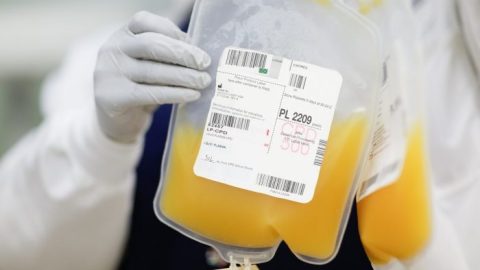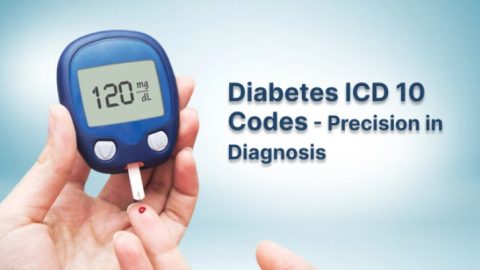Excessive thirst is something everyone has experienced after exercise, hot weather, or a salty meal. However, when thirst becomes constant, intense, and seemingly unquenchable, it may indicate a medical condition known as polydipsia. This symptom often raises concern because it can be a sign of underlying health issues, particularly diabetes. Understanding what polydipsia is, why it occurs, and how it connects to blood sugar regulation is essential for recognizing health risks early and seeking proper care.
In this comprehensive guide, we will explore the definition of polydipsia, its physiological mechanisms, the role it plays in diabetes, and the importance of timely diagnosis and treatment. We will also cover medical evaluations, treatment approaches, lifestyle adjustments, and how patients can manage this condition effectively.
Understanding the Meaning of Polydipsia

Polydipsia refers to an abnormally strong and persistent feeling of thirst that goes beyond the body’s normal need for hydration. Unlike typical thirst, which occurs as a natural response to dehydration, polydipsia does not subside even after drinking significant amounts of water. This continuous drive to drink is usually a warning sign of systemic imbalance within the body.
The condition can appear suddenly or gradually, depending on the underlying cause. It is often accompanied by polyuria, which is excessive urination, since the two symptoms are closely connected in disorders like diabetes mellitus and diabetes insipidus. While drinking large amounts of water in response to dehydration or vigorous exercise is normal, polydipsia is considered abnormal because it occurs without such obvious triggers.
From a medical standpoint, polydipsia is not a disease by itself but rather a symptom. Its presence prompts doctors to investigate deeper health issues, particularly those involving the endocrine and renal systems.
How the Body Regulates Thirst
To fully grasp why polydipsia occurs, it is important to understand the normal mechanisms behind thirst regulation. The brain plays the central role in maintaining fluid balance. Specialized receptors in the hypothalamus monitor the concentration of solutes in the blood, also known as osmolality. When osmolality rises due to dehydration or excessive salt intake, these receptors signal the body to feel thirsty.
At the same time, the kidneys regulate water retention through hormones such as antidiuretic hormone (ADH). If hydration levels drop, ADH secretion increases, prompting the kidneys to conserve water by concentrating urine. In contrast, when a person drinks enough fluids, ADH levels decline, and urine becomes more diluted.
Polydipsia disrupts this balance. Even when osmolality normalizes, the sensation of thirst remains disproportionately strong. This failure of regulation often points to hormonal or metabolic dysfunctions, such as those found in diabetes.
Polydipsia in Diabetes Mellitus
The most well-known connection between polydipsia and disease is found in diabetes mellitus, a chronic condition characterized by high blood sugar levels. In both type 1 and type 2 diabetes, the body either fails to produce enough insulin or cannot use insulin effectively. Insulin is the hormone responsible for helping glucose move from the bloodstream into cells where it can be used for energy.
When glucose remains in the bloodstream, the kidneys attempt to filter and excrete the excess sugar through urine. However, glucose in the urine draws water along with it in a process called osmotic diuresis. As a result, individuals with uncontrolled diabetes experience frequent urination, or polyuria. The fluid loss triggers persistent thirst, leading to polydipsia.
This sequence forms a classic symptom trio in diabetes: polyuria, polydipsia, and polyphagia (excessive hunger). For many people, polydipsia is one of the earliest noticeable warning signs of diabetes.
Polydipsia in Diabetes Insipidus
While diabetes mellitus is the most common cause, diabetes insipidus is another condition strongly associated with polydipsia. Despite sharing part of the same name, this disorder is unrelated to blood sugar. Instead, it involves a deficiency or resistance to antidiuretic hormone. Without proper ADH activity, the kidneys cannot concentrate urine effectively, leading to massive water loss.
Patients with diabetes insipidus may produce several liters of dilute urine daily. To compensate, they develop intense polydipsia, often drinking water continuously to avoid dehydration. This condition highlights how both endocrine and renal dysfunctions can produce similar thirst symptoms even though the underlying mechanisms differ.
Distinguishing Normal Thirst from Polydipsia
One of the challenges in identifying polydipsia is separating it from normal thirst responses. For instance, an athlete training in summer heat may drink several liters of water per day without having an underlying disorder. The distinction lies in context and persistence.
Normal thirst occurs in response to fluid loss and resolves once balance is restored. In contrast, polydipsia continues relentlessly, often waking individuals at night or compelling them to carry water constantly. The volume of fluid intake in polydipsia can be extreme, sometimes exceeding six or seven liters per day.
Furthermore, normal thirst does not usually coincide with other symptoms such as unexplained weight loss, fatigue, or frequent urination. The presence of these additional signs should prompt medical evaluation for diabetes or other systemic diseases.
Diagnostic Evaluation of Polydipsia
When a patient presents with excessive thirst, physicians take a structured approach to uncover the cause. The evaluation begins with a detailed medical history, including the duration of thirst, daily fluid intake, urination patterns, and any associated symptoms. Family history of diabetes or endocrine disorders is also considered important.
Blood tests play a central role. A fasting blood glucose test or oral glucose tolerance test helps determine whether diabetes mellitus is present. In cases where diabetes insipidus is suspected, doctors may perform a water deprivation test, which measures urine concentration after controlled fluid restriction. Hormone assays, including ADH levels, may also be ordered.
Imaging studies, such as MRI scans of the brain, are sometimes necessary to rule out pituitary or hypothalamic abnormalities that affect thirst regulation. The combination of history, laboratory results, and imaging provides a comprehensive picture to confirm the cause of polydipsia.
Complications of Untreated Polydipsia
Ignoring persistent polydipsia can have serious health consequences. In uncontrolled diabetes mellitus, ongoing high blood sugar leads to complications such as nerve damage, kidney failure, and cardiovascular disease. The continuous fluid imbalance also places stress on the kidneys and bladder.
In diabetes insipidus, the risk lies in severe dehydration and electrolyte imbalance. When the body cannot hold onto water, sodium levels in the blood may rise dangerously, leading to confusion, seizures, or even coma.
Even in cases not directly related to diabetes, psychogenic polydipsia—a condition often associated with psychiatric disorders—can cause water intoxication if fluid intake overwhelms the kidneys’ ability to excrete it. This demonstrates that excessive thirst should always be taken seriously, regardless of the suspected cause.
Treatment Approaches for Polydipsia
The management of polydipsia depends entirely on addressing its underlying cause. In diabetes mellitus, the primary focus is blood sugar control. This may involve lifestyle changes, oral medications, or insulin therapy. As glucose levels stabilize, osmotic diuresis decreases, and excessive thirst usually subsides.
For diabetes insipidus, treatment targets the hormonal imbalance. Synthetic analogs of ADH, such as desmopressin, are commonly prescribed to help the kidneys retain water. In cases of nephrogenic diabetes insipidus, where the kidneys do not respond to ADH, alternative strategies such as dietary adjustments and certain medications are used.
When polydipsia is psychogenic, therapy often includes psychiatric treatment, behavioral interventions, and careful monitoring of fluid intake. This highlights the importance of individualized treatment since the causes of polydipsia vary widely.
Lifestyle Adjustments for Managing Excessive Thirst
Beyond medical treatments, patients can adopt lifestyle adjustments to ease the discomfort of polydipsia. Maintaining a balanced diet low in refined sugars and processed foods helps stabilize blood glucose levels. Adequate sleep and stress management also play supportive roles in preventing hormonal imbalances that worsen thirst.
Patients are encouraged to track daily fluid intake and monitor urination frequency. This record can be valuable for both personal awareness and medical consultations. Drinking water steadily throughout the day, rather than in large amounts at once, can help maintain hydration without overwhelming the kidneys.
Education is equally vital. Understanding that excessive thirst is not always harmless empowers individuals to seek help promptly. Early detection can prevent complications and significantly improve quality of life.
Polydipsia as an Early Warning Sign of Diabetes
Many people discover they have diabetes only after recognizing symptoms like unexplained thirst. Because polydipsia often appears in the early stages of the disease, it serves as a crucial warning sign. Patients who notice this symptom and seek evaluation may catch diabetes before serious complications develop.
Public health awareness campaigns frequently highlight polydipsia as one of the “red flag” symptoms of diabetes. Doctors encourage patients not to dismiss constant thirst as a minor inconvenience but to view it as the body’s way of signaling imbalance. Early diagnosis opens the door to effective treatment, lifestyle adjustments, and better long-term health outcomes.
The Psychological Impact of Living with Polydipsia
Living with persistent thirst can be mentally and emotionally draining. People with polydipsia often report feelings of frustration and anxiety, especially when the symptom interferes with daily activities or sleep. Carrying water bottles everywhere or waking multiple times at night to drink can disrupt normal routines and reduce overall well-being.
For diabetic patients, polydipsia may also serve as a constant reminder of their condition, creating emotional stress. Support groups, counseling, and education can help individuals cope with these challenges. Addressing the psychological aspect of polydipsia is just as important as treating the physical cause, since mental health plays a significant role in long-term disease management.
Future Directions in Research and Treatment
Ongoing research continues to explore better ways to manage polydipsia and its associated conditions. Advances in diabetes technology, such as continuous glucose monitoring and artificial pancreas systems, offer hope for reducing symptoms like excessive thirst. In diabetes insipidus, gene therapy and new medications targeting kidney function are being studied.
Scientists are also investigating the brain’s thirst regulation mechanisms in greater detail. Understanding how neural pathways interpret signals of hydration may eventually lead to novel treatments for disorders where thirst regulation goes awry.
These efforts reflect the growing recognition of polydipsia not only as a symptom but as an important marker of systemic health. Future discoveries may allow earlier detection and more personalized care for those affected.
Conclusion
Polydipsia is far more than just feeling thirsty. It is a persistent, overwhelming drive to drink fluids that often signals underlying health problems, most notably diabetes mellitus and diabetes insipidus. By disrupting normal fluid balance, these conditions create a cycle of excessive urination and thirst that can severely affect quality of life.
Understanding what polydipsia is, why it occurs, and how it is linked to diabetes is critical for early recognition and proper treatment. From medical evaluations to lifestyle adjustments, addressing polydipsia requires a comprehensive approach tailored to each individual’s needs.
Most importantly, excessive thirst should never be ignored. Recognizing polydipsia as a potential warning sign empowers patients to seek timely care, prevent complications, and maintain better health outcomes in the long run.
FAQs About Polydipsia and Diabetes
What is the main difference between normal thirst and polydipsia?
Normal thirst appears when the body loses fluids through heat, exercise, or a salty diet and usually goes away once hydration is restored. Polydipsia, on the other hand, persists even after drinking large amounts of water. It is often linked to underlying conditions such as diabetes mellitus or diabetes insipidus, where hormonal or metabolic imbalances disrupt the body’s fluid regulation.
Can polydipsia be the first sign of diabetes?
Yes, in many cases polydipsia is among the earliest symptoms of diabetes mellitus. When blood sugar rises beyond normal limits, the kidneys excrete excess glucose through urine, causing dehydration. This leads to constant thirst that patients often notice before receiving a formal diagnosis. Recognizing this symptom early can help in detecting diabetes sooner.
Is polydipsia always related to high blood sugar?
Not always. While diabetes mellitus is the most common cause, polydipsia can also result from diabetes insipidus, certain medications, psychiatric disorders, and hormonal imbalances. Each condition affects fluid regulation differently, but they all share the same outcome of excessive thirst. A proper medical evaluation is needed to identify the exact cause.
How much water do people with polydipsia usually drink?
The amount varies, but individuals with true polydipsia may consume six to eight liters of water per day or even more. This intake is significantly higher than normal daily fluid requirements. Despite drinking so much, the sensation of thirst often does not go away because the root cause, such as high blood sugar or hormone deficiency, remains untreated.
Can lifestyle changes help reduce polydipsia?
Yes, lifestyle management plays a supportive role in reducing excessive thirst. For patients with diabetes mellitus, controlling blood sugar through diet, exercise, and medication is the key to easing polydipsia. Staying mindful of hydration patterns, limiting refined sugars, and monitoring fluid intake also help. However, since polydipsia is usually a symptom of a deeper problem, medical treatment is essential alongside lifestyle adjustments.
Disclaimer: This article is intended for informational and educational purposes only. It should not be considered medical advice, diagnosis, or treatment. If you are experiencing persistent thirst or suspect you may have diabetes or another health condition, please consult a qualified healthcare professional for personalized guidance.



